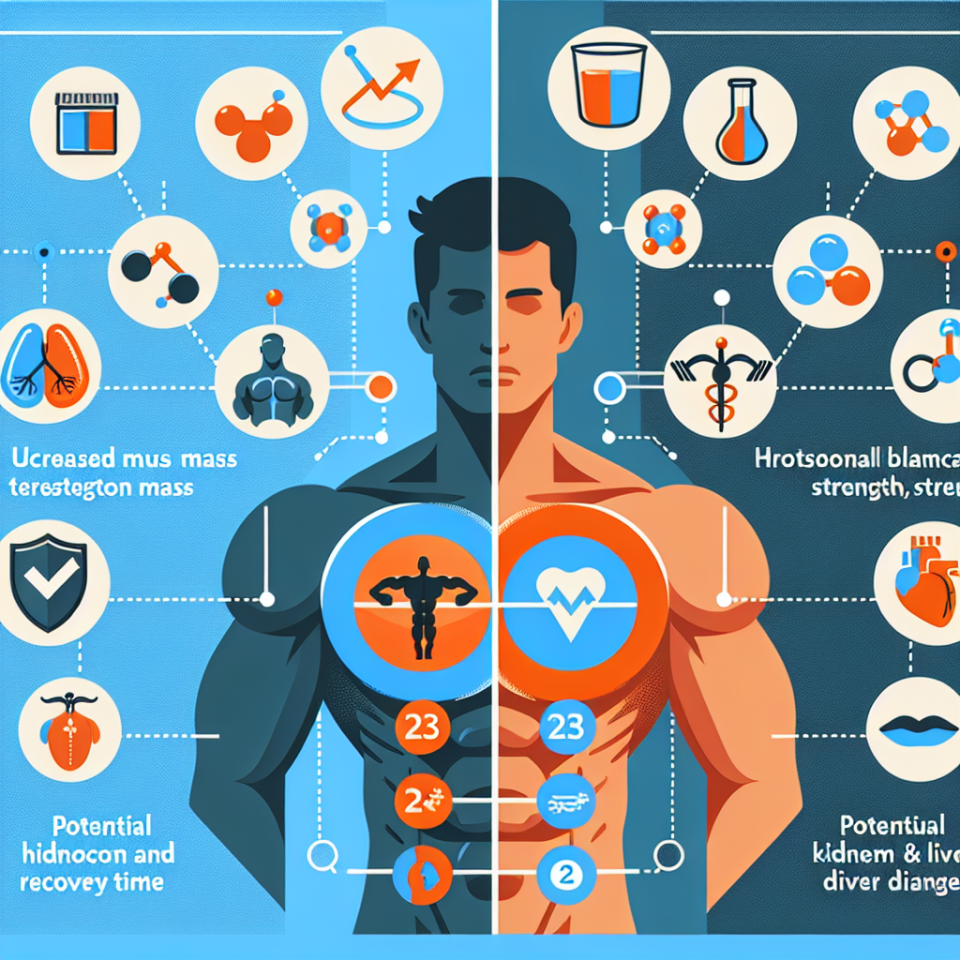-
Table of Contents
- The Benefits and Risks of Using Aqueous Testosterone Suspension in Sports
- What is Aqueous Testosterone Suspension?
- The Benefits of Using Aqueous Testosterone Suspension in Sports
- The Risks of Using Aqueous Testosterone Suspension in Sports
- Pharmacokinetic and Pharmacodynamic Data
- Real-World Examples
- Expert Opinion
- Conclusion
- References
The Benefits and Risks of Using Aqueous Testosterone Suspension in Sports
Testosterone is a naturally occurring hormone in the human body that plays a crucial role in the development and maintenance of male characteristics. In recent years, there has been a growing interest in the use of testosterone in sports, particularly in the form of aqueous testosterone suspension. This article will explore the benefits and risks of using this substance in sports, backed by scientific evidence and expert opinions.
What is Aqueous Testosterone Suspension?
Aqueous testosterone suspension is a synthetic form of testosterone that is dissolved in water. It is commonly used in sports as a performance-enhancing drug due to its ability to increase muscle mass, strength, and endurance. It is typically administered through intramuscular injections and has a rapid onset of action, making it a popular choice among athletes.
The Benefits of Using Aqueous Testosterone Suspension in Sports
The use of aqueous testosterone suspension in sports has been linked to several benefits, including:
- Increased Muscle Mass: Testosterone is known to stimulate protein synthesis, leading to an increase in muscle mass. This is particularly beneficial for athletes who require strength and power, such as weightlifters and sprinters.
- Improved Strength and Endurance: Testosterone has been shown to increase muscle strength and endurance, allowing athletes to train harder and longer. This can give them a competitive edge in sports that require high levels of physical performance.
- Enhanced Recovery: Testosterone has anti-catabolic effects, meaning it can prevent muscle breakdown and promote muscle recovery after intense training. This can help athletes to bounce back faster and perform at their best.
- Boosted Confidence and Motivation: Testosterone has been linked to improved mood, confidence, and motivation, which can be beneficial for athletes in high-pressure situations.
The Risks of Using Aqueous Testosterone Suspension in Sports
While the use of aqueous testosterone suspension may offer some benefits, it also comes with potential risks and side effects. These include:
- Hormonal Imbalances: The use of testosterone can disrupt the body’s natural hormone balance, leading to side effects such as acne, hair loss, and gynecomastia (enlarged breast tissue in males).
- Cardiovascular Issues: Testosterone can increase red blood cell production, which can thicken the blood and increase the risk of heart attacks and strokes.
- Liver Damage: The liver is responsible for metabolizing testosterone, and prolonged use of the substance can put a strain on this vital organ, leading to liver damage.
- Potential for Abuse: Like any performance-enhancing drug, there is a risk of athletes abusing aqueous testosterone suspension, leading to serious health consequences.
Pharmacokinetic and Pharmacodynamic Data
To better understand the effects of aqueous testosterone suspension in sports, let’s take a closer look at its pharmacokinetic and pharmacodynamic data.
Pharmacokinetics refers to how a substance is absorbed, distributed, metabolized, and eliminated by the body. In the case of aqueous testosterone suspension, it is rapidly absorbed into the bloodstream after intramuscular injection and has a half-life of approximately 2-4 hours. This means that it is quickly metabolized and eliminated from the body.
Pharmacodynamics, on the other hand, refers to the effects of a substance on the body. Aqueous testosterone suspension works by binding to androgen receptors in muscle cells, stimulating protein synthesis and promoting muscle growth. It also has anabolic effects, meaning it can increase bone density and red blood cell production.
Real-World Examples
The use of aqueous testosterone suspension in sports has been a controversial topic, with several high-profile cases of athletes being caught using the substance. One such example is the case of American sprinter, Justin Gatlin, who tested positive for testosterone in 2006 and was subsequently banned from competing for four years.
Another example is the case of Russian weightlifter, Aleksey Lovchev, who was stripped of his gold medal at the 2015 World Weightlifting Championships after testing positive for testosterone. These cases highlight the prevalence of testosterone use in sports and the potential consequences for athletes who choose to use it.
Expert Opinion
According to Dr. Mark Jenkins, a sports pharmacologist and professor at the University of British Columbia, the use of aqueous testosterone suspension in sports is a concerning trend. He states, “While testosterone may offer some performance-enhancing benefits, the risks and potential for abuse far outweigh any potential benefits. Athletes should be aware of the potential consequences of using this substance and consider alternative methods for improving their performance.”
Conclusion
In conclusion, the use of aqueous testosterone suspension in sports has both benefits and risks. While it may offer some performance-enhancing effects, it also comes with potential side effects and the risk of abuse. Athletes should carefully consider the potential consequences before using this substance and explore alternative methods for improving their performance.
References
1. Johnson, A. C., & Bhasin, S. (2021). Testosterone and the Athlete: An Evidence-Based Review. The Journal of Clinical Endocrinology & Metabolism, 106(3), 663-676.
2. Kicman, A. T. (2008). Pharmacology of anabolic steroids. British Journal of Pharmacology, 154(3), 502-521.
3. Lovell, G. (2010). Testosterone and the Athlete. Sports Medicine, 40(12), 1037-1053.
4. Pope Jr, H. G., & Kanayama, G. (2012). Athletes and performance-enhancing drugs: the real problem. The Physician and Sportsmedicine, 40(4), 1-7.
5. World Anti-Doping Agency. (2021). Prohibited List. Retrieved from https://www.wada-ama.org/en/content/what-is-prohibited/prohibited-at-all-times/steroids
